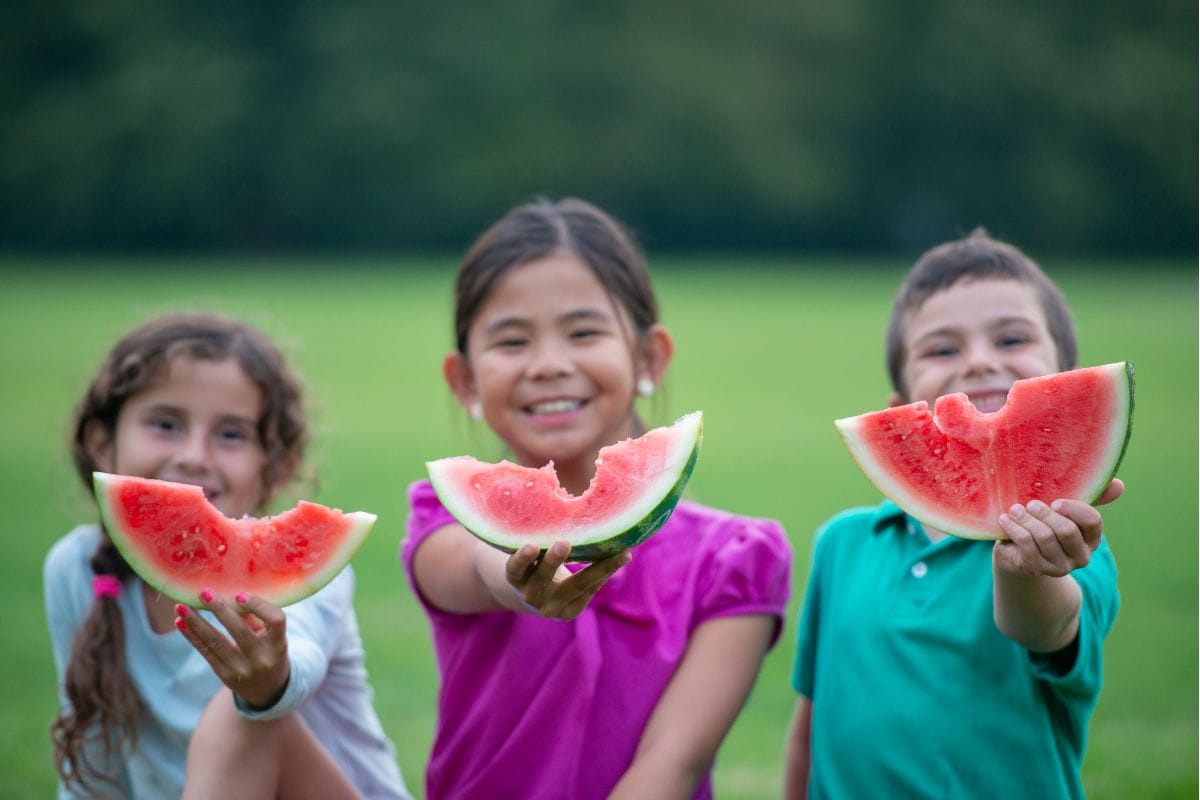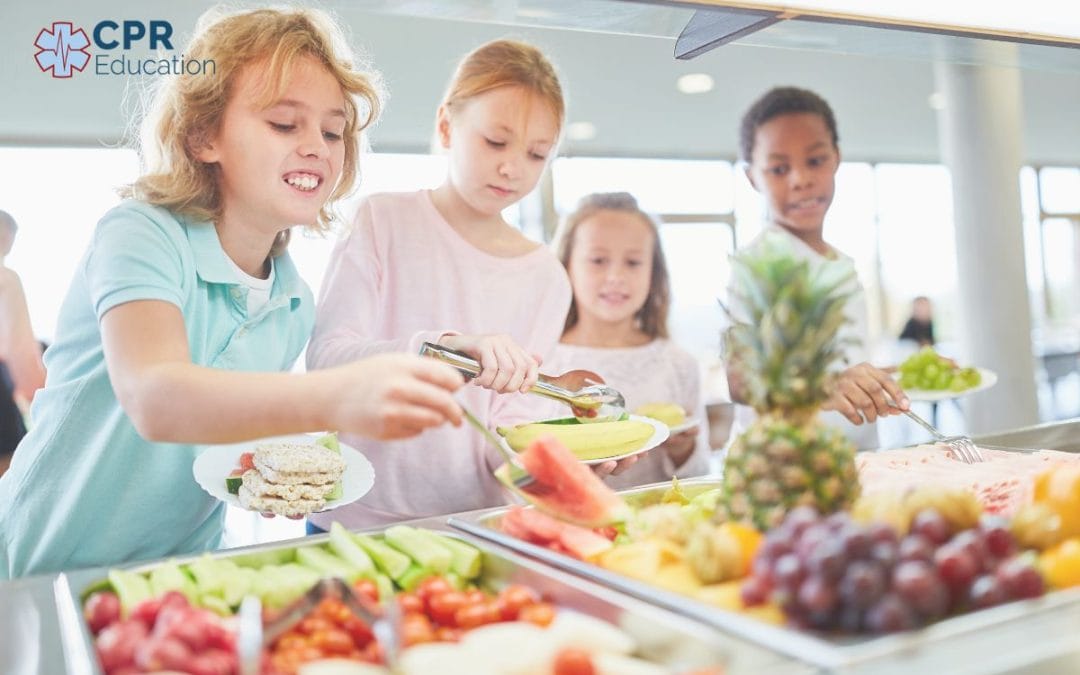Early childhood is a critical window for developing healthy eating habits that can last a lifetime. During this period, children proliferate—not just in size, but in brain development, emotional awareness, and physical skills. What they eat and how they learn to eat play a major role in shaping their health, learning ability, and behavior. When children are supported with balanced meals and consistent routines, they’re more likely to stay focused, active, and resilient.
For childcare providers, supporting children’s nutrition goes beyond offering snacks. It means creating a space where food is part of a child’s learning experience, including safety, structure, and meaningful habits. Whether running a daycare or preschool or working in a center, your role matters. Here’s how we can build strong foundations and support young children in learning to eat well.
Why Early Nutrition Is Critical

Good nutrition during early childhood supports the development of the brain, bones, muscles, and immune system. Children’s bodies and minds are changing fast in the first five years. Nutrients like protein, iron, calcium, and vitamins help them think, build strength, and avoid frequent illness.
When kids don’t get enough healthy food—or when their meals are high in sugar and low in nutrients—they can show signs like poor focus, irritability, and even sleep problems. Over time, this can affect how they perform in school and their bodies develop. Healthy eating early on helps protect them from long-term issues like obesity, heart disease, and type 2 diabetes.
Common Challenges in Early Childhood Nutrition
Even the most experienced childcare providers face challenges when it comes to nutrition. One common issue is picky eating. Some kids refuse vegetables or demand the same food every day. Others may have food allergies, which makes menu planning more complex. Family routines at home, such as irregular meals or frequent fast food, can also affect a child’s eating habits at school or daycare.
Screen time is another challenge. Children who spend much time watching TV or using devices are more likely to snack on processed foods. Also, many families are dealing with budget or time limits, which can lead to quick, packaged meals that are low in nutrition.
It’s important not to rely on supplements or highly processed “kid foods.” Whole foods—like fruits, vegetables, grains, and lean proteins—are still the best sources of nutrition.
What Healthy Habits Look Like in Practice

Healthy eating doesn’t mean forcing children to finish their plates. Instead, it’s about creating routines and environments that help them make good choices. Here are some simple, proven strategies:
- Offer a variety of colors on the plate. Different colors usually mean different nutrients.
- Use family-style meals when possible. Let children serve themselves with guidance.
- Avoid sugary drinks. Water is the best option. Milk can also be offered depending on age.
- Stick to regular mealtimes, with structured snacks in between.
- Involve kids in simple food prep like rinsing veggies or arranging fruit slices.
Talking about food in positive ways can also help. Ask children about their favorite fruit or how carrots help our eyes. These small interactions make food more interesting and less stressful.
Role of Childcare Providers in Nutritional Development
Childcare professionals often work with children for a big part of the day. This puts providers in a strong position to shape food-related behaviors. This goes hand-in-hand with health and safety expectations.
Providers trained under EMSA health and safety training are already familiar with many standards related to nutrition, meal planning, and food handling. These standards help ensure that children eat safely and that providers are aware of their responsibilities regarding nutrition and hygiene.
Partnerships with parents also make a big difference. Sending home meal updates or hosting short discussions during pick-up times can align habits between the center and home.
Creating a Nutrition-Friendly Childcare Setting

It’s easier to promote healthy eating when the environment supports it. Some ideas for building a nutrition-friendly setting include:
- Plan simple, balanced menus using affordable ingredients like oats, bananas, beans, and leafy greens.
- Limit high-sugar snacks like cookies, candy, or flavored drinks—especially during celebrations.
- Display fun visuals of fruits and vegetables to create familiarity.
- Practice clean eating areas, keeping hands, tables, and utensils safe and ready.
Food can also be connected to sensory and developmental learning. Exploring the smell of herbs or the feel of a soft fruit supports language and motor skills.
Building Safety Into Nutrition: The Overlooked Link
Nutrition isn’t just about what we eat—it’s also about how safely we serve and supervise it. Eating can pose safety risks, especially for toddlers and young children. Choking is a genuine concern.
All childcare providers should be ready to respond if something goes wrong. This is where pediatric CPR and first aid training come in. If a child begins choking or shows signs of an allergic reaction, trained providers can act quickly and effectively. These emergency skills are not optional—they are essential.
In California, 8 hours of preventive health and safety training are a legal requirement for licensed childcare providers. This training includes guidance on nutrition, emergency response, and creating safer environments.
Small Changes, Lasting Impact
Helping children build healthy eating habits isn’t about big programs or strict rules. It’s about everyday actions—serving colorful meals, sitting down together, discussing food, and ensuring safety comes first. These small efforts can lead to better behavior, stronger bodies, and healthier minds.
As caregivers and professionals, we have the tools to support the next generation’s well-being. One of the most valuable tools is knowledge. At CPR Education, we provide essential health and safety courses that help providers meet licensing requirements and serve children better. To learn more about the Preventive Health and Safety Training program, visit us. Let’s keep making choices that protect and empower every child in our care.

